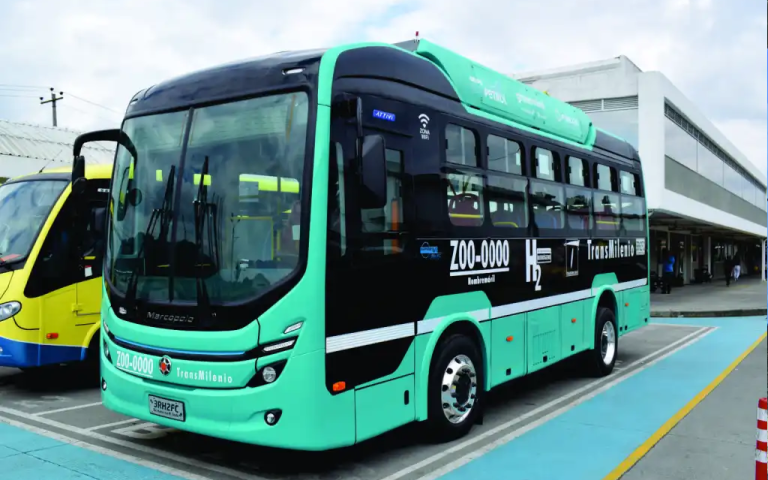This project represents an energy revolution in terms of reducing polluting emissions and is supported by companies such as Superpolo, Fanalca, Fenoge, Transdev, TransMilenio and Ecopetrol.
The bus, called Attivi, is manufactured by Marcopolo and will be available in two versions: one for buses up to 10 meters and another for standard, articulated and bi-articulated buses. The body of the vehicle has been designed to be built self-supporting on Marcopolo chassis.

The bus works like an electric vehicle, but instead of charging the batteries through an external connector, it uses a fuel cell that processes hydrogen gas. This hydrogen, stored in high-pressure tanks, is combined with oxygen to produce water vapor and electrical current through a process called "reverse electrolysis." The electric motor of the bus is powered by the energy produced by the fuel cell and also by a battery bank located in the lower part of the vehicle, which stores energy regenerated by the braking system.
The article also explains that hydrogen is the first element on the periodic table and is used as an energy vector. In this case, the green hydrogen used for the project is produced by an electrolyser that uses water and solar energy to separate the hydrogen and oxygen molecules.

The use of hydrogen buses has several advantages, such as a longer range compared to plug-in electric vehicles and faster charging due to the ability to refill the hydrogen tanks in just 8 minutes. In addition, hydrogen buses are lighter than battery electric vehicles, making them more suitable for higher capacity models such as articulated and bi-articulated buses.
However, there are also challenges in the use of hydrogen, such as the cost of fuel, the production process, and hydrogen-powered buses. The handling of hydrogen is complex due to its tendency to leak and its storage and transport require high pressures, which increases its cost.
Despite these challenges, the article notes that the outlook for hydrogen as an energy source is encouraging, and some auto companies are investing in fuel cell development. In the future, different mobility solutions are expected to co-exist, including fossil fuels, renewable energy sources, synthetic fuels, plug-in electric vehicles, hybrids, and vehicles powered by green hydrogen.

